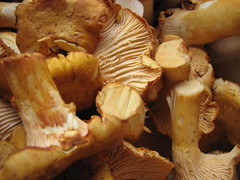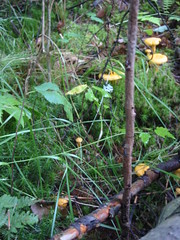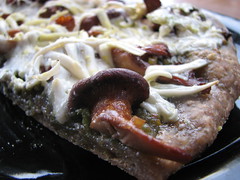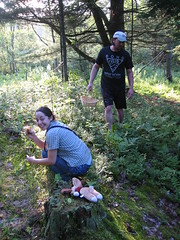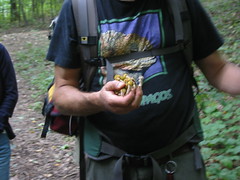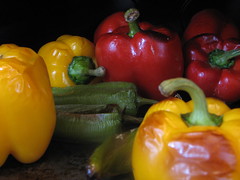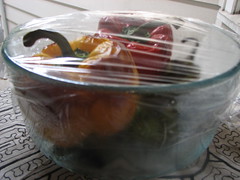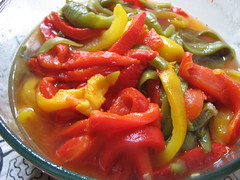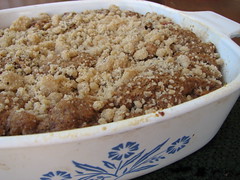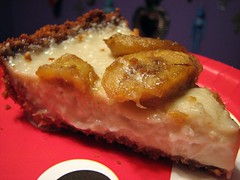October 12th, 2008
How to Clean a Mushroom
I end this wild and wacky mushroom week with sage advice. Don’t wash your mushrooms! I cringe whenever I see someone cleaning mushrooms that way. Mushrooms are like little sponges and if you submerge them in water, it changes their texture for the worse. I come from the belief system that a little dirt is actually beneficial for you (immune strength and b12). I don’t eat handfuls of dirt, but I refuse to wash my mushrooms. If this freaks you, read on. I still clean mushrooms, just with a different method.
While foraging, I try to clean as much dirt off in the field as I can. I’m lazy and use my knife and blow on the gills. You could carry a little brush with you (which I will when my current toothbrush goes kaput). But back in the kitchen for wild mushrooms or storebought ‘shrooms, the best way to clean them is with a damp towel. I find a damp paper towel works best, but it is wasteful to use paper if there is an alternative. I have a stack of bar rags in my kitchen and they serve this purpose beautifully. I dampen them and gently wipe away any offending dirt. You can easily clean the stem with a paring knife. I rinse out my rag, dry it on the faucet and then throw it in the hamper. When I have a bigger kitchen, I may have a designated mushroom rag with it’s own hook. Right now, space is of the essence where I live and I can’t be draping towels all over the place.
So please, please do NOT wash your mushrooms. Lightly brush away the dirt with a towel/rag or mushroom brush. Has anyone tried these fancy brushes? I’ve seen them in the stores but haven’t tried any. Thanks for listening. Mushrooms across the world will have their dignity back.
